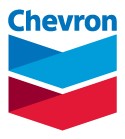Choosing the Best Format for Your Resume
To produce your baseline resume, you can use various resources in the Career Center Library, such as the Resumes & Professional Letters Writing Brochure. However, it's important to note that different formats can showcase your qualifications differently, so choose the one that best presents your alignment with the employer's needs.
Chronological Format
The traditional chronological format highlights your career progression and the organizations you've been associated with. It's best suited if you've held leadership roles or had increasingly notable responsibilities with well-known organizations. This format lists your work experience in reverse chronological order, starting with your most recent job.Functional Format
The functional format emphasizes your range of knowledge, skills, and abilities before describing your employment history. It's best if you're looking to emphasize your transferable skills that match with the employer's needs. This format is useful when you want to highlight your achievements, but not necessarily in the order they occurred.Curriculum Vitae (CV)
Academia or research-oriented job seekers often use a curriculum vitae (CV). It's typically a more comprehensive and descriptive resume, incorporating areas of study and research, and presenting a more holistic view of your academic journey.Applicant Tracking Systems (ATS)
Many organizations use Artificial Intelligent systems, including advanced Applicant Tracking Systems, to screen, manage, and track resumes through their hiring processes. Familiarize yourself with the guidelines provided in our Online Resources section of this site to optimize your resume for ATS screening. Remember that managers spend approximately 15 seconds on the initial screening of resumes, so choose a format that confirms your alignment with the employer's needs in the top half of the page. Your decision between one or two-page presentations may also be influenced by this consideration.Resume Appearance Checklist
- Does your job objective show your alignment with their core business, strategy, or goals? Use the balance of the document to showcase how your skills and experience support your objective.
- Spelling, mixed tense, and grammatical errors provide the fastest route to the trash can for many otherwise powerful resumes. Have someone else proofread spelling and grammar for you. Do not rely on spell-check to correct errors! Spell-check will not differentiate between led and lead or between to, too, and two. The best rule of thumb is to read your resume backward. That is when spelling and grammatical errors really stand out.
- Make sure the resume is concise and easy to read. Too much ink on a page may be an indicator that you have information that is not relevant to that specific employer. It can create resume noise that keeps the reader from seeing your obvious matches with their urgent hiring needs.
- Do not use personal pronouns such as I, me, or my on a resume.
- Avoid repetitive phrases when describing your experience. Use Thesaurus resources to identify alternative phrasing.
- Describe activities that employers may not be familiar with, especially those unique to Texas A&M University (if you are a Recent Graduate).
- Instead of using abbreviations or acronyms for organizations, write the entire name of the group unless it is widely understood what they represent.
- Use a consistent font throughout the resume. Fonts such as Times Roman, Optima, Helvetica, Courier, and Arial are professional in appearance and easy to read. The text in the body of the resume should be 10- 11 points. Headings can be 12 points, with your name between 14 and 16 points.
- Use bold print to highlight each section or heading. However, avoid excessive use of underlining, italics, bold, or graphics. This adds unneeded emphasis and may make the information difficult to read. Margins can be set at 1” on all sides. If you need space, reduce the top and bottom margins first. All margins should never be smaller than .7”.
- Always use high-quality paper, but it does not have to be “resume paper”.
- Print your resume professionally using black ink on white paper. (You will want to carry six copies of your resume to each interview.)
- Compose a separate cover letter to accompany each resume and address the letter to a specific person. We provide a recommended template to develop Cover Letters to separate you from your competition.
- Use our Networking contact resources to identify addressees for Cover Letters. Avoid sending a letter that begins with “Dear Sir/Madam” or “To Whom It May Concern”.
